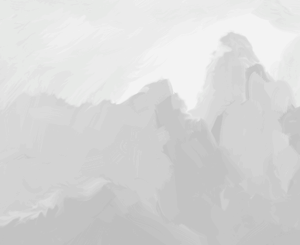
1895 — 1961
Gui Zhitang
Physicist, and Christian university administrator and professor.
Gui Zhitang was born in China in 1895. He graduated from Yale in 1917 and received a PhD in physics from Princeton. He returned in 1921 to China to teach physics at Yale-in-China (Yali) in Changsha. Helen Xu (Helen Huie) married Gui on July 22, 1921, in Shanghai and together they had six children.
During the Northern Expedition in 1926, the communists in Changsha directed an attack on Yali’s middle school, causing the school to close and the foreign staff members to be evacuated. In 1927-28 Gui and his brother-in-law Zhang Fuliang served on a six-member committee established to make recommendations about reopening Yali.
While Yali was closed, Gui and a small group of students moved to Central China University (CCU) in Wuhan on the Yangtze River. They took with them boxes of scientific equipment, and this cooperation from Yale strengthened CCU’s science work. When Gui later became head of the physics department there, he brought other professors with advanced training to join the science faculty. Gui also hired an expert machinist who was able to turn out simple equipment that they needed. Gui became the first dean of the school of science, set up to fulfill the new national regulations set by the ministry of education, which required any educational institution to have three schools to be classified as a university. (The other two schools at CCU were for education and the arts.)
In the fall of 1935, Gui left for a year’s study in the United States. When he returned in September 1936, he brought back new apparatus to set up a magnetic and ionospheric research station in partnership with the Carnegie Institute for Science.
When the war with Japan started in northern China, Wuhan at first was a place of safety for the refugees from Beijing and Tianjin, and then later Shanghai and Nanjing. But by January 1938 Wuhan too had become a place of danger, so people sought safety further west in Sichuan, Guangxi and Yunnan provinces. Much of the Gui’s time was spent in relief work because two hundred and fifty refugees were living on the campus.
When CCU began making preparations to move, Gui was asked to take charge, even though he had already made a decision to take a position at Wuhan University. He organized a committee of the CCU faculty members to decide on which books and equipment were to be taken and then started boxing them up. On July 3, 1938, people packed the two boats and early the next morning Gui was one of the hundred faculty and students who boarded the steamer. The following day Japanese bombers attacked the city with several bombs falling near the abandoned campus.
After successfully moving Central China University to Guilin, Gui headed back north and west to join Helen, the children and his mother who had traveled with others from Wuhan University to take refuge in Leshan, Sichuan. He took up his new post as head of the college of science and he and his wife helped to lead Christian activities for students exiled in the remote region. Gui was elected chairman of the advisory committee for the new YMCA student reading and recreation center. In 1943, Gui was asked to join a six member commission on postwar programs for American and British Christian colleges in China.
Gui died in 1961 after he was libeled and mistreated as a “rightist” during the Cultural Revolution. He was buried in Wuhan. Helen continued to teach English at Wuhan University until she retired.
Gui’s capability as the lead faculty member in several academic science departments meant that he was often called upon to plan and organize major projects, whether evacuating a campus or planning how Christian schools would rebuild in post-war China.
Sources
- Stacey Bieler, "The Xu Family: A Legacy of Service" in Salt and Light: More Lives of Faith That Shaped Modern China, edited by Carol Hamrin with Stacey Bieler (Eugene, OR: Pickwick Publications, 2010), 98-102.
About the Author
Research Associate, Global China Center, Michigan, USA



